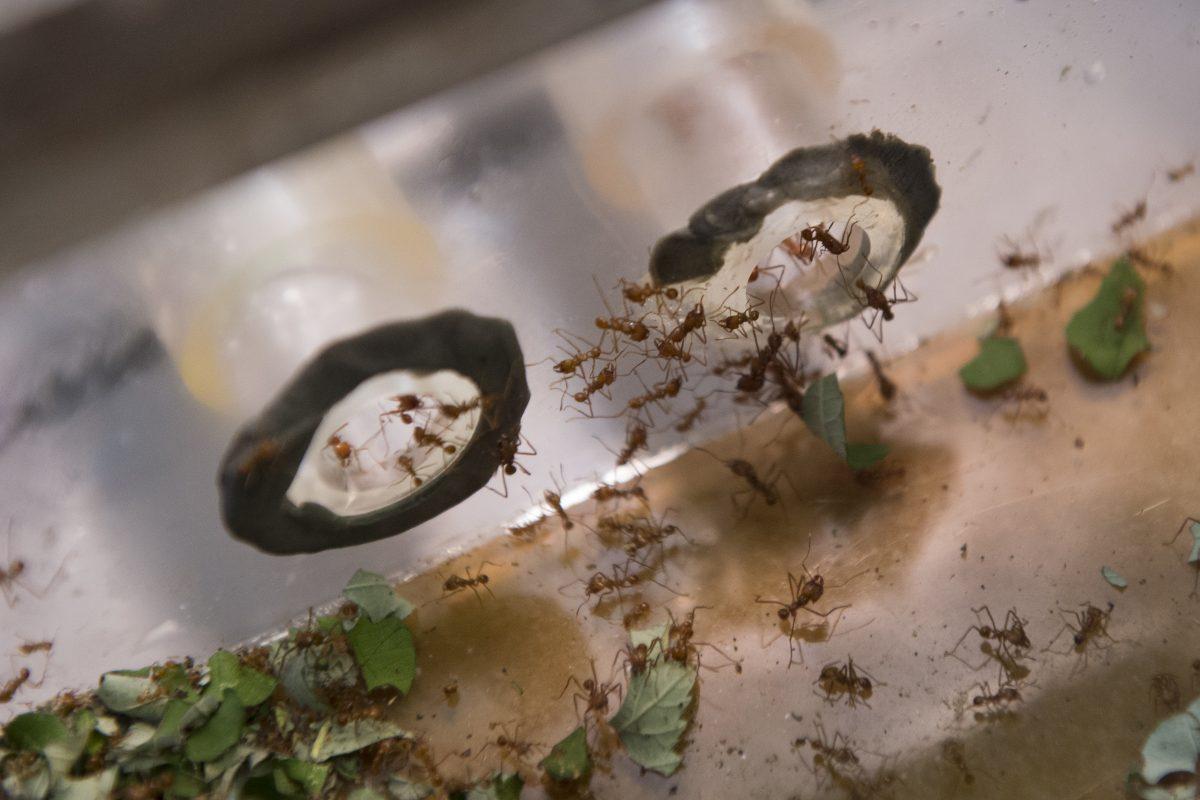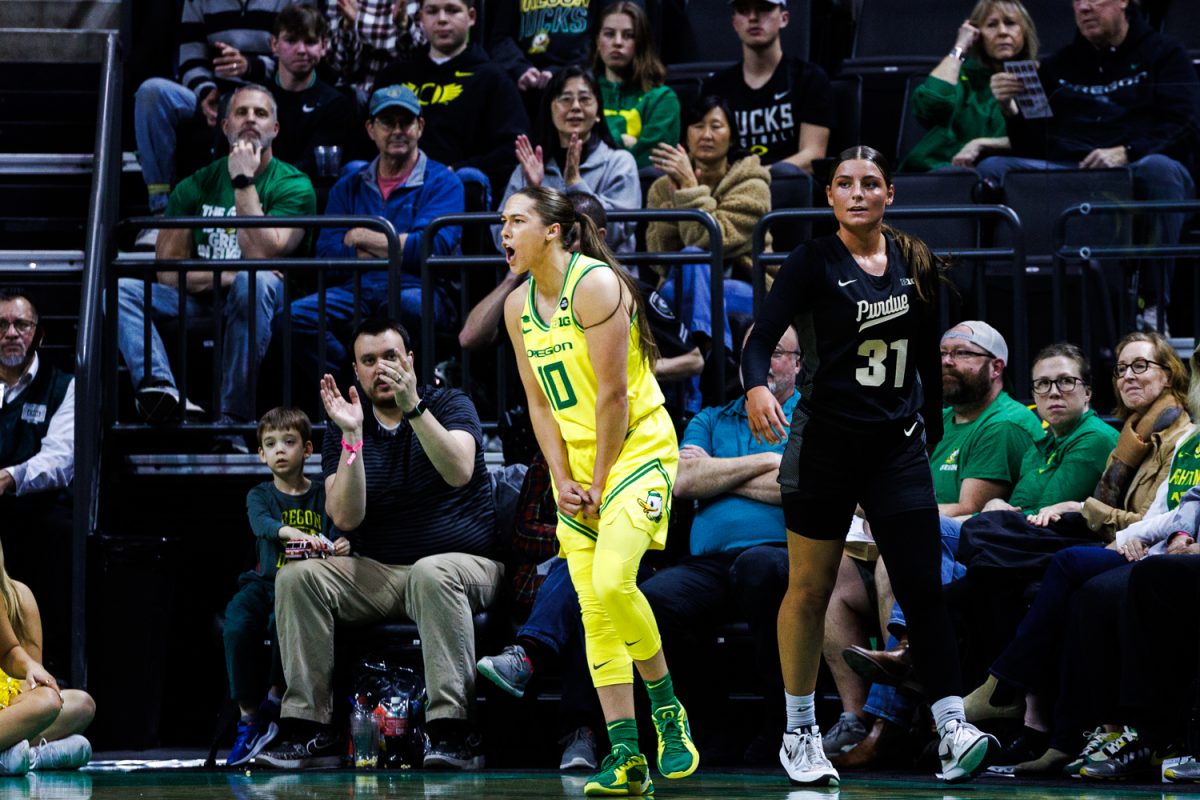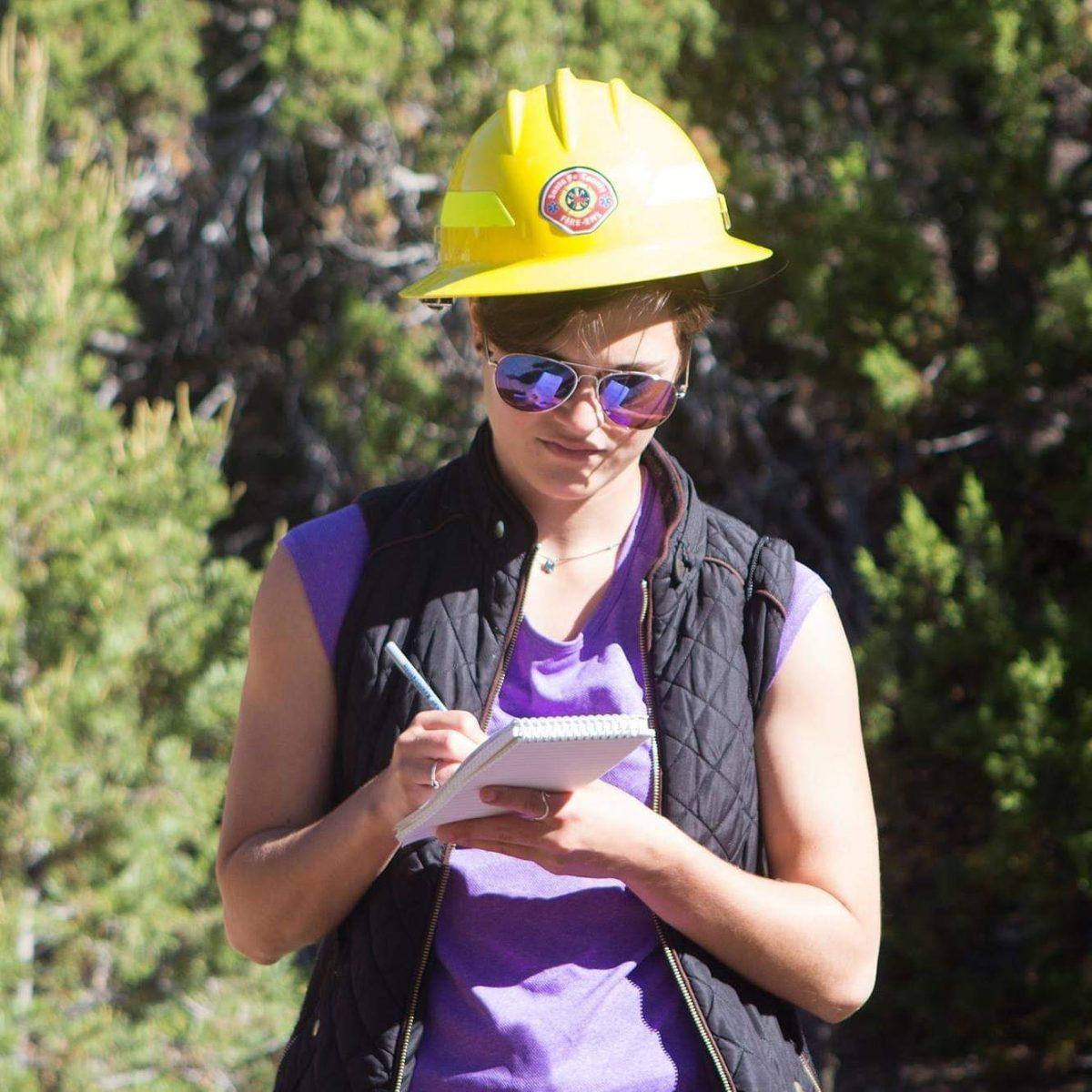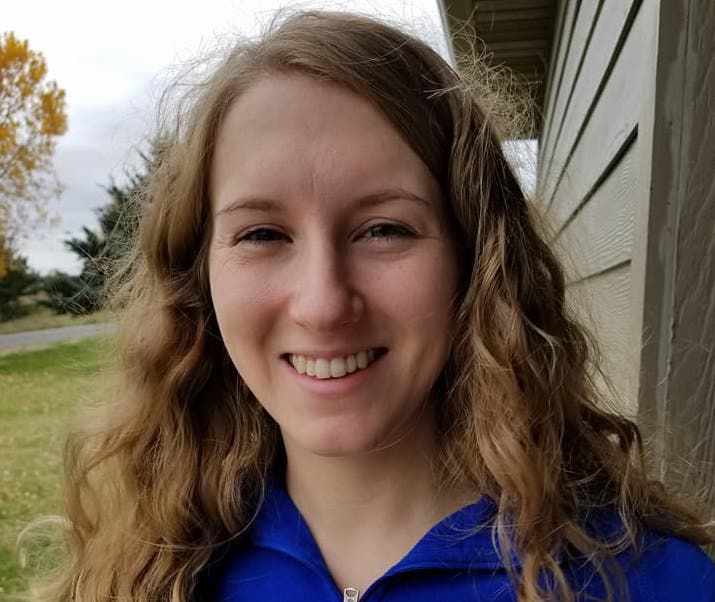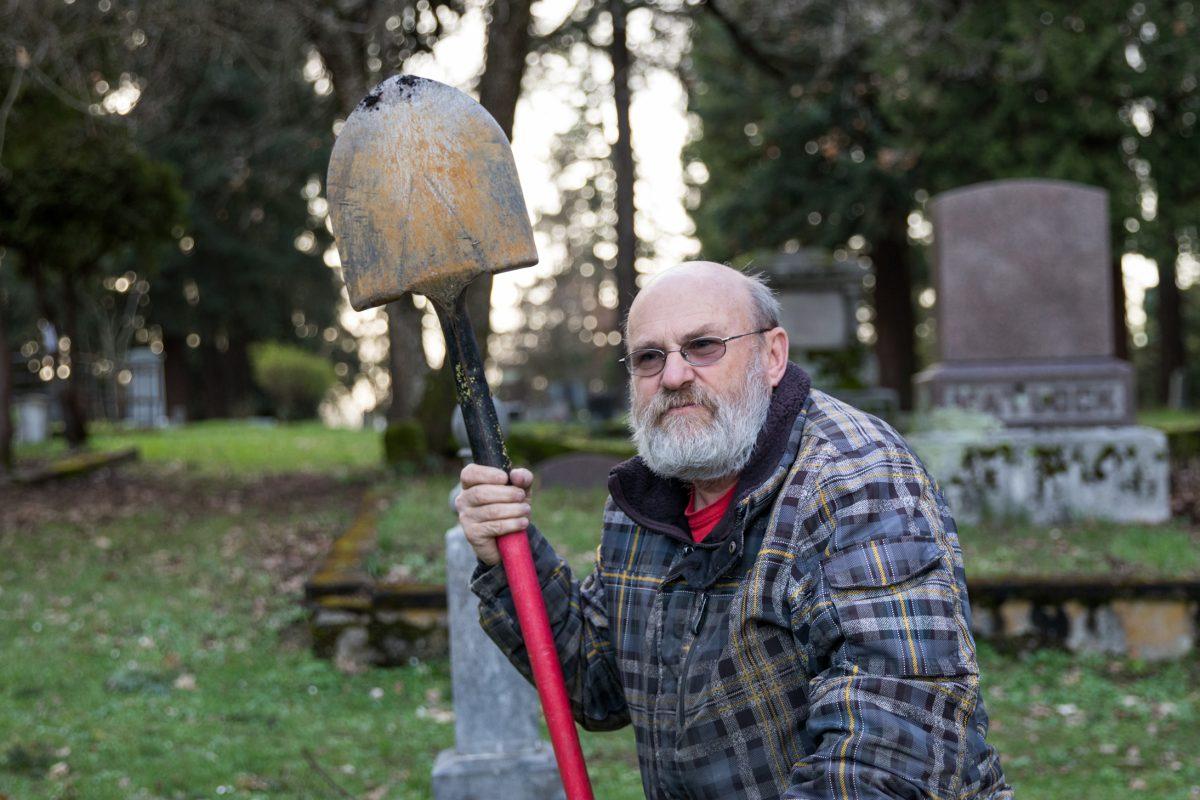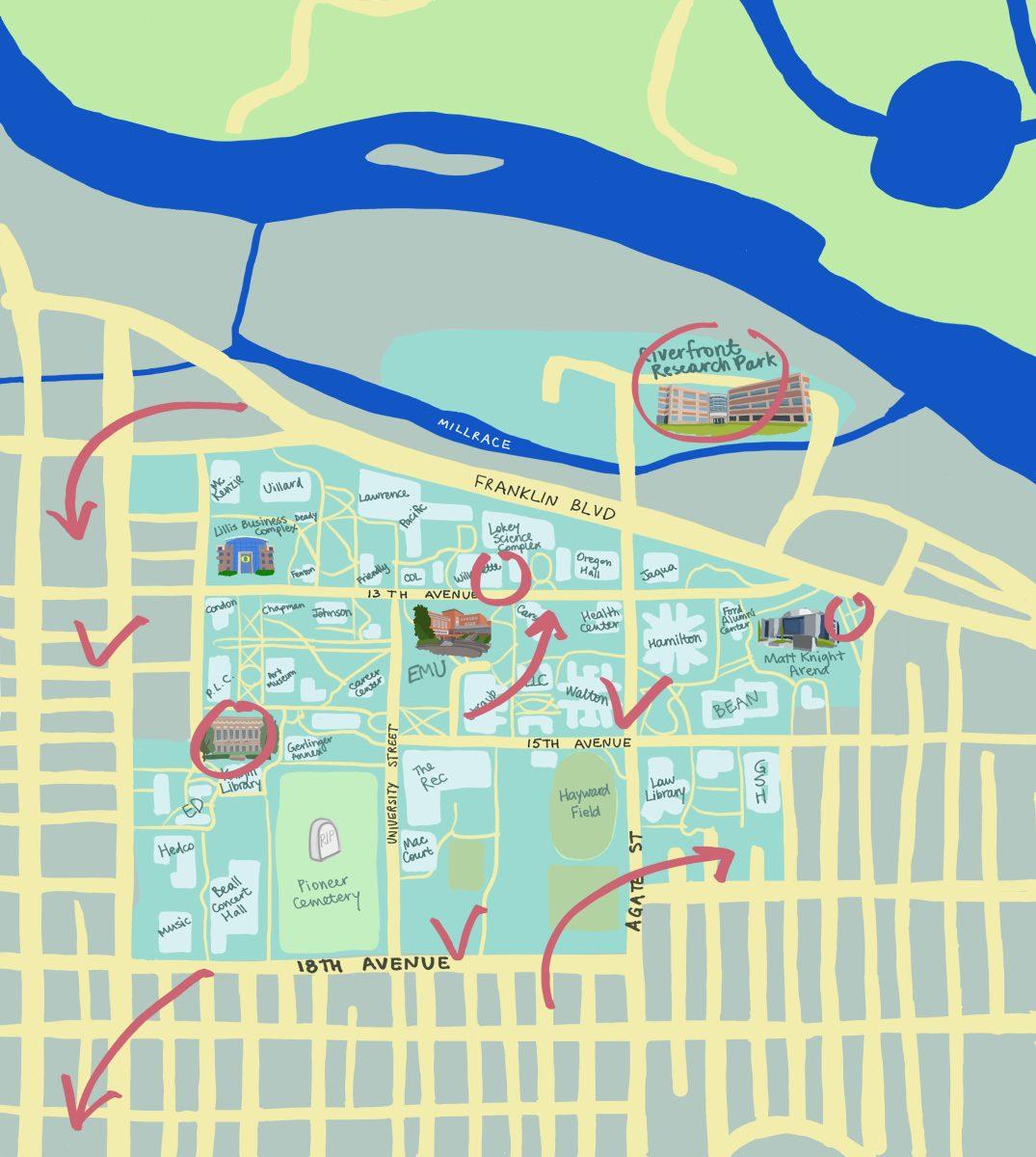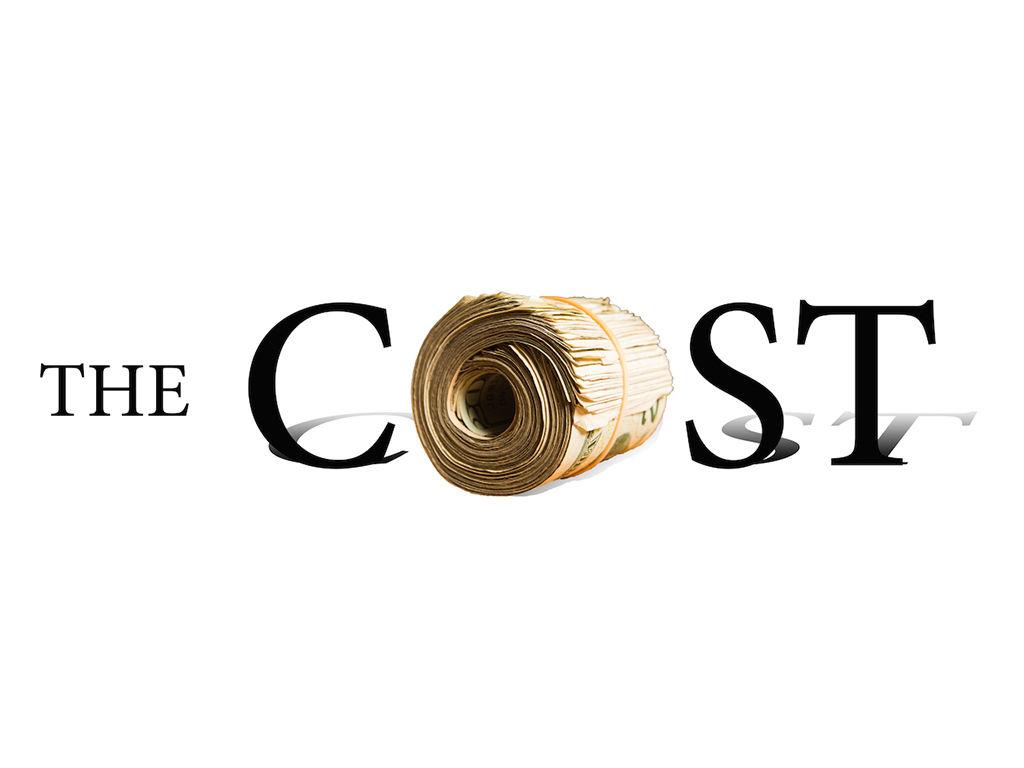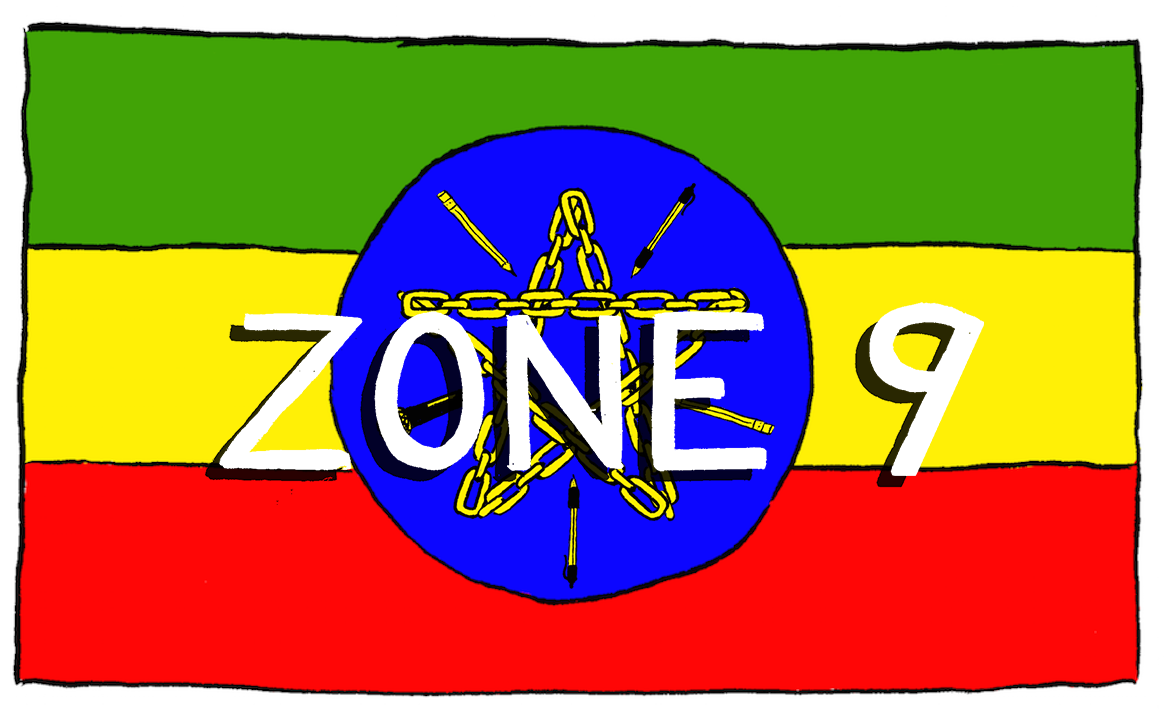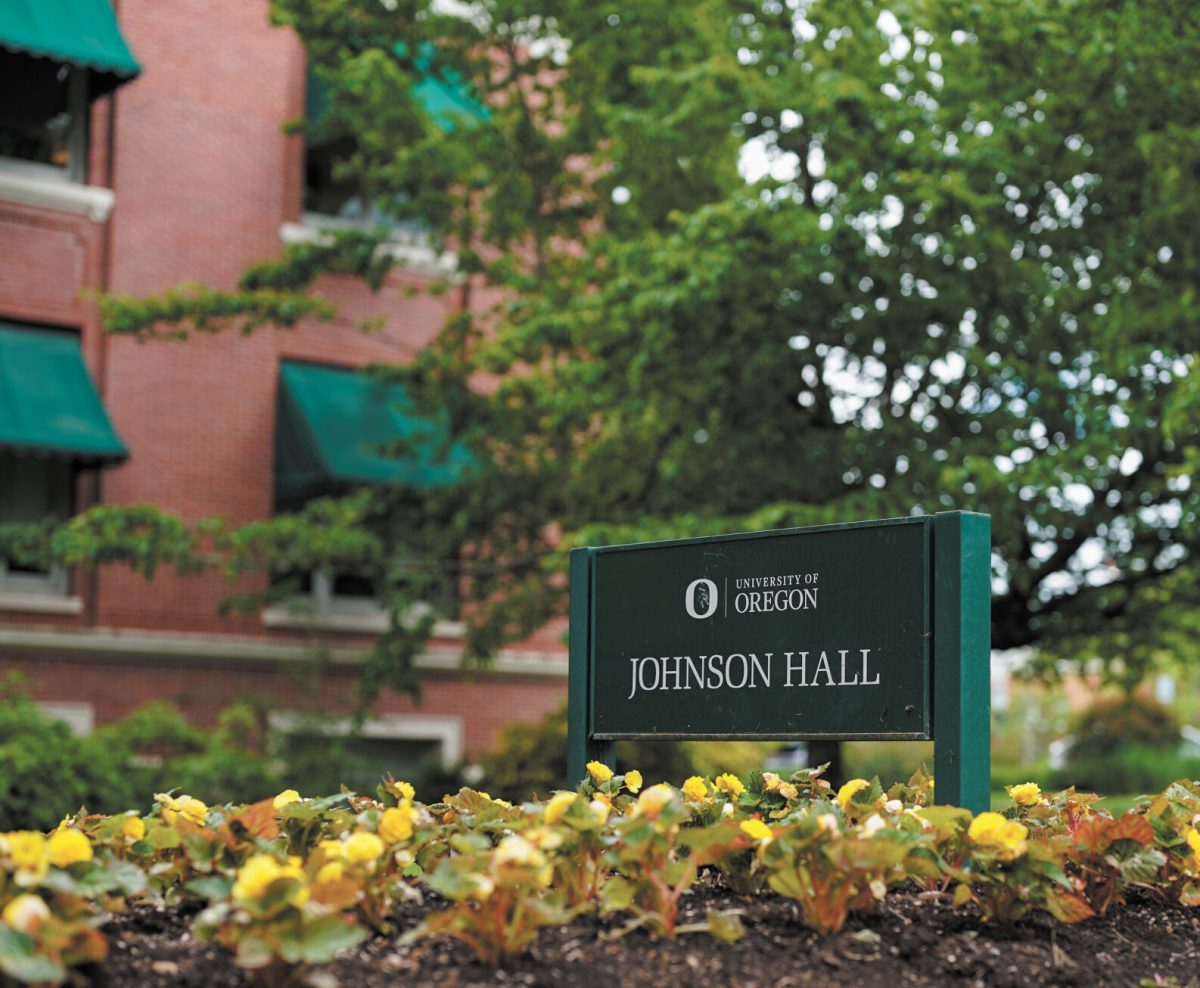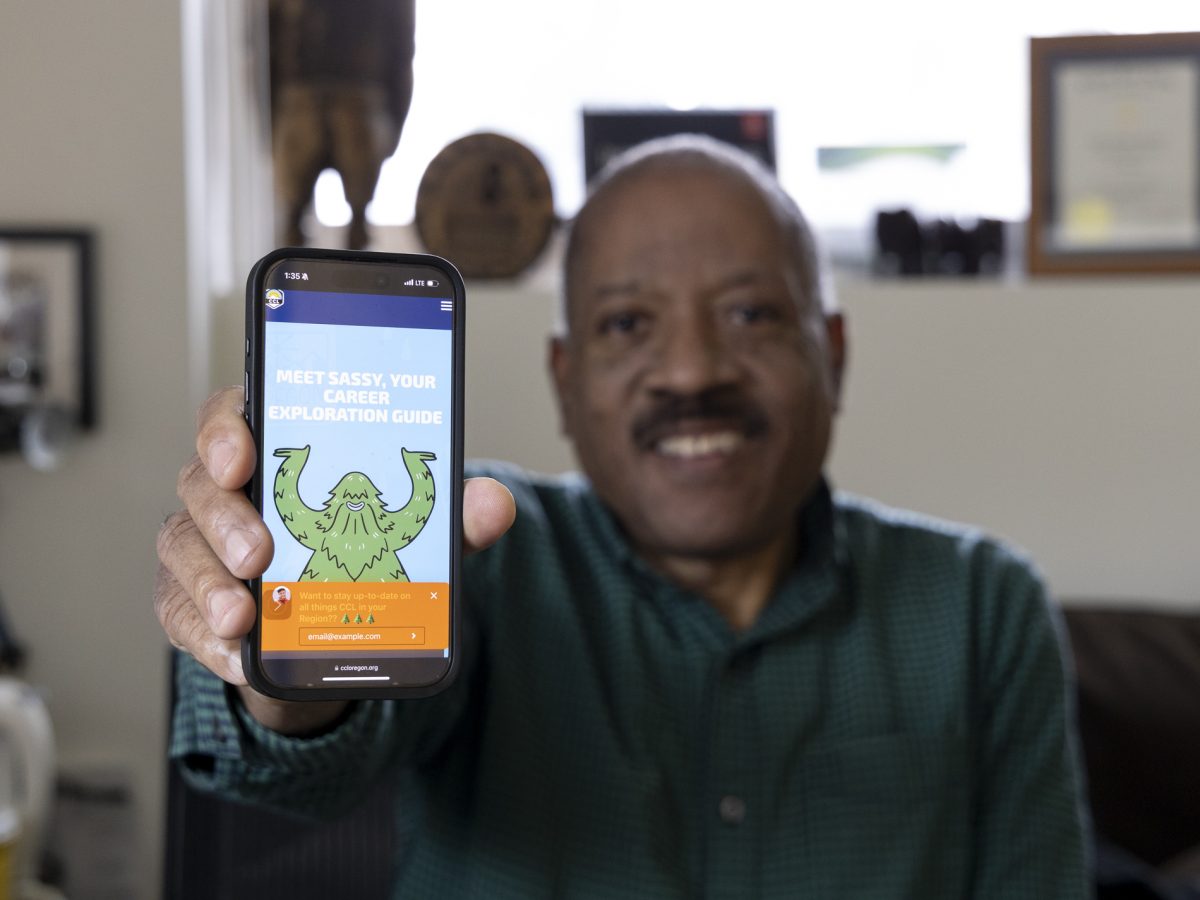In the basement of the volcanology building at the University of Oregon, Dr. Robert Schofield sat hunched over his leaf-cutter ant colony, housed in a cluster of glass terrarium boxes connected by intertwining tubes. He watched as Ant 256 plunged her mandibles into a waxy leaf for the last time.
It’s almost time for Ant 256 to change her career. Six legs hold her firmly in place while her jaw muscles contract her cranial scissors, shearing the leaf apart. All around, her sisters work. Some cut the leaves into fragments, while others haul them back to the subterranean colony in a neat line. Those with sharp mandibles both cut and carry, while ants with dull mandibles only carry — a division of labor that maximizes their productivity.
Ant 256 is middle-aged — about five months old — and her job since birth has been a cutter. Her mandibles were once as sharp as a surgical scalpel, but have dulled after months of punching, cutting and slicing. She struggles to work them through the leaf. Her job is taking longer to complete, and she’s tired. If she only carries the leaf fragments, less energy will be wasted. It happens to all cutters once their mandibles dull down enough, but the decision comes with a cost. As a carrier with dull mandibles, she’s less useful to the colony, and she knows it. So when the colony is attacked, she may have to change duties again.
The attack, like everything that happens in the lab, won’t come from nature, but from Schofield and his student assistants.
Dr. Robert Schofield
Twelve years ago, in the same lab, Schofield began his experiments on leaf-cutter ants. The Atta cehpalotes ants are the subjects of his experiments, which unveil a new depth to the complexities of ant civilizations.
In a 2010 research paper, Schofield described the behavior of Cutting vs. Carrying, and detailed how difficult cutting leaves can be for ants with dulled mandibles. The research showed the dulled-mandible ants go on to help the colony in other ways, and it’s now widely accepted by the scientific community. He theorizes the behavior is explained through energetics — the need to conserve energy which is a guiding mechanism of the colony’s life.
Schofield’s lab contains thousands of tiny ants, like Ant 256. Day and night, they crawl up from their colony to a regularly-replenished leaf-foraging bin. Ants cut and carry trimmed leaf fragments down winding polyethylene tubes to their subterranean empire. But they don’t actually eat the leaves. Just like farmers growing crops, the ants grow a white, spongy fungus on the leaves in an underground garden. The ants tend to the fungus, keeping it healthy and trimmed, then eat it and feed it to their brood. This tiny, ancient form of agriculture was developed about 50 million years ago. Humans have only been growing crops for about 15 thousand years.
“Evolution has not neglected the so-called ‘lower animals’ and has given them abilities that are, in many ways, equal to ours,” Schofield said. Ants and humans are two of four animal groups to have achieved agriculture — termites and bark beetles are the others.
One of Schofield’s newest experiments explores a peculiar behavior of the ant colony while under a simulated attack. “We noticed that some ants attack us when we intrude, and some ants run away,” he said. After observing this behavior, Schofield wondered, similar to ants switching from cutting to carrying, if energy conservation might explain the reason some ants flee and some ants attack.
The name of this new experiment: Heroes and Cowards. Schofield’s hypothesis states that heroes have duller or broken mandibles, and cowards have sharper mandibles. Schofield and his team of UO students have observed hundreds of ants for this experiment, and Ant 256 is among them. If the evidence is consistent with his thesis, the experiment will support the idea that conserving energy is paramount to the leaf-cutter ants.
As Ant 256 pinches a piece of leaf 50-times her weight between her dulled mandibles, carrying it back to the colony, a sudden breeze from above nudges her leaf cargo, knocking her off balance.
Tom Kreisman exhales on the foraging ants, sending them into a frenzy. If they were experiencing this threat in their native habitat of South American rainforests, it would indicate the presence of a predator. Kreisman, a lab assistant and recent UO graduate, recreates the Heroes and Cowards experiment that was initially performed months ago. “They sense carbon dioxide to indicate the presence of a predator,” he said. In response, some ants flee — cowards — others, including Ant 256, enter a defensive stance, brandishing their mandibles, ready to swarm — heroes. Then comes the attack: Kreisman lowers a fist-sized piece of yellow chair foam into the remaining ants. They bite, wriggle and tear at the foam with their mandibles. And although their weapons aren’t as sharp as they once were, a predator would suffer from the ants’ swarming attack. The colony must be protected, even if it means an ant’s death.
Kreisman said the defense mechanism is further indication that division of labor is a guiding principle of the ants’ lives. “It makes them more dynamic than we thought they were,” he said. “It implies some self-evaluative capability. It’s something that we generally associate with higher-order thinking.”
Kreisman lifts the foam from the ant swarm to pluck free Ant 256. He grasps her between his thumb and index finger, careful not to hurt her. She struggles as he preps for observation. Kreisman cranks the microscope knobs, and Ant 256’s head comes into focus under the lens. A camera mounted to the eyepiece of the microscope snaps a series of pictures of her mandibles. Ant 256 represents the newest data point for the Heroes and Cowards experiment.
Kreisman said that the team doesn’t know when enough data will be collected to conclude whether the Heroes and Cowards hypothesis is proven.
In the end, Ant 256 fulfilled her duty to the colony. She served as a cog in the ant super-organism, reaching out from deep within the earth to pluck the leaves from high in the canopy and carry them back home; or, ready to strike at an enemy for the colony’s safety, ensuring the tiny civilization lives on.
The Emerald has captured the sights and sounds of ant science in a multimedia story that explores the lab, its inhabitants and the mind of the man that made it all happen.
Follow this link to an Emerald E1 and enter the world of ants.


